Posted by Elena del Valle on January 25, 2012

Many people surveyed recently said they love coffee
Photos: Simon & Baker, Starbucks/Business Wire
Americans love their coffee. Forty percent of coffee drinkers that responded to a survey recently said they couldn’t live without coffee, even for a week, when compared to a cell phone, romance, sports, and social networking. Forty percent of the survey takers said coffee was more important than showering when asked about their daily routines, according to Starbucks U.S. Regional Roast Preferences Study, Dec. 2011*.
Although the total sales of coffee in 2010 (about $7.6 billion) were 3.7 percent higher than in 2009 and retail sales in 2011 were expected to reach $8.5 billion, representing a 12 percent rise, the increase is due to higher coffee and commodities prices rather than higher consumer consumption, according to Coffee US October 2011 Executive Summary from Mintel.

Starbucks Blonde Roast Coffee, available beginning January 10, 2012
Marked increases in commodity prices, the price of coffee beans, energy and other commodities that are needed to transport coffee and market it in retail outlets, were behind the raise in coffee prices. Almost half (48 percent) of coffee drinker respondents to the Mintel report said they are “drinking more coffee at home and less coffee away from home this year than last year.” Mintel researchers believe that trend will probably continue through 2012.
At home consumption of coffee may be tempered by dissatisfaction regarding choices on the part of some consumers. One of every four shoppers leave the coffee aisle without buying coffee because “either they can’t find what they’re looking for, or the premium coffee section doesn’t make sense to them,” according to a Starbucks press release this month citing SmartRevenue Coffee/Tea Aisle Path to Purchase Research, May 2011*.
Given the flat sales it may be that coffee makers and sellers are trying to expand their market share. Starbucks seems to be. The international coffee mega brand known for its medium and dark roast coffee launched Starbucks Blonde Roast Coffee, a new light flavor, January 10, 2012 hoping to capture part of the 54 million coffee drinkers domestic market who say they prefer a lighter roast coffee (Starbucks Consumer Research 2010*).
“It took eight months and more than 80 different recipe and roast iterations before we landed on the exact flavor profile our customers told us they were looking for,” said Brad Anderson, master roaster, Starbucks.

Brad Anderson, master roaster, Starbucks
“Starbucks Blonde Roast is our answer to providing a premium lighter roast coffee to appeal to those that describe Starbucks signature roast as too intense,” said Jeff Hansberry, president, Channel Development for Starbucks. “This new roast profile will allow us to increase our share of the brewed coffee market down the grocery aisle where a majority of coffee sales are in the light and medium roast categories. This segment of the market represents a $1 billion opportunity for the company in the U.S. alone.”
It’s no accident Starbucks is banking on another variety of roast coffee. Roasted coffee remains king. Retail sales of roasted coffee reached nearly $5.9 billion in 2010, representing a 4 percent increase from the previous year while instant coffee sales rose 0.5 percent and ready to drink coffee sales grew 5.2 percent during the same time period, according to Mintel. The research company’s experts anticipate that the roasted category will be the primary driver of sales gains in 2011.
*A Starbucks spokesperson declined to provide copies of the reports or the executive summaries of the reports. Instead she indicated by email that the “Data was collected from a U.S. Census representative sample of Americans ages 18+.”
Posted by Elena del Valle on January 9, 2012
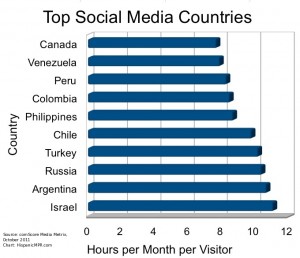
Top Social Media Countries – click to enlarge
In many countries social networking has become ubiquitous. The mode of communication has become an essential part of people’s daily lives. Traversing international boundaries social networking has turned into the most popular online activity, according to It’s A Social World Top 10 Need-to-Knows About Social Networking and Where It’s Headed, a December 2011 comScore report. ComScore tracks online behavior and usage.
In October 2011, comScore researchers estimate social networking accounted for 19 percent of people’s time online or nearly 1 in every 5 minutes spent online; and social media, they believe, reaches 82 percent of the world’s 1.2 billion internet population.
Where people used to send emails and use instant messaging software to communicate many now rely on social media, the report says. In the United States (98 percent) and Canada (94 percent) social media site penetration, comScore staff believe, is nearly pervasive. They also estimate 41 of the 43 markets individually reported by comScore exhibit a market penetration of 85 percent or more.
When the researchers examined total time spent online, Israel was the most active country, followed by Argentina, Russia, Turkey, Chile, Philippines, Colombia, Peru, Venezuela and Canada. People in the Asia Pacific region, particularly East Asian countries, spend the least amount of time on social networks, according to the comScore findings.
The report also indicates women spend more time social networking than men. For example, women in North America and Europe, spent an average of nearly two hours (30 percent) more than men on social networking sites in a month. Older adults, users 55 and older, are the fastest growing segment in social networking sites, says the report.
Facebook is the undisputed leader in most countries. In October, Facebook reached 55 percent of the world’s audience, accounting for about three in every four minutes people spent on social networking sites and one in every seven minutes they spent online per comScore data.
Microblogging, mainly Twitter, is booming worldwide. Twitter reaches one in ten internet users around the planet to rank among the top social networks. In the last year it grew 59 percent. While initially users in the United States drove social media and microblogging growth that is no longer true. Only 19.8 percent of Facebook users, 20 percent of Twitter fans, and 38.2 percent of LinkedIn users are in the United States.
Posted by Elena del Valle on January 3, 2012

As we start another year we are thankful for the years passed and for you our readers and listeners of the HispanicMPR articles and podcast interviews.
We wish you a very healthy, happy and prosperous New Year!
Posted by Elena del Valle on December 16, 2011

Emanuel Andren’s Monte Enebro chocolate
Photo: Emanuel Andren, Mars, Elizabeth Arden, Edward Marc Chocolatier
More consumers (13 percent) regard cell phones as appropriate gifts for children ages 6 to 11, up from 4 percent earlier this year. About one in three (32 percent) shoppers expect stores to offer boxes although at the same time 21 percent of survey takers said they don’t bother with wrapping paper relying instead on gift bags. More than 20 percent prefer to browse the stores then shop online to save money. A similar number say they plan to reduce the number of people they gift. These estimates are based on the 25 Stocking Stuffers from Mintel, Holiday Shopping U.S. July 2011 and Seasonal Chocolate U.S. August 2011 Mintel survey reports.
On the positive front, 27 percent of survey respondents said that when they shop for the holidays, they often buy something for themselves. Christmas decorations and cards remain popular; 42 percent of survey takers said they bought Christmas decorations in the past year while 64 percent bought a Christmas card and 67 percent received one in the past year. Even pets were involved; 11 percent of respondents said pets sent a card or gift.

White Diamonds Elizabeth Taylor Holiday Gift Set, for those who wish to wear or gift the top selling celebrity fragrance
Many (29 percent) of domestic consumers said they bought someone a fragrance and 28 percent bought candles for Christmas. That’s not surprising since winter holidays have been the high season for fragrance sales in past years, according to Mintel.
Celebrity endorsed fragrances are among the most popular, according to a Forbes.com April 2011 article (Top-Selling Celebrity Perfumes by Dorothy Pomerantz). Elizabeth Arden sold $54 million worth of White Diamonds by Elizabeth Taylor in the United States last year. The perfume, according to the article, has been a favorite of the public since it was launched in 1991. Other notables peddling fragrances with success, includes Derek Jeter (Driven), Beyoncé (Heat), P. Diddy’s Sean John (Unforgivable), Sarah Jessica Parker (NYC), Jessica Simpson (Fancy) and Gwen Stefani (Harajuku Lovers).

MMs packaging for 2011 end of year holidays
Entertaining, vacations, cooking, chocolates and alcoholic beverages during the holidays remain popular; 18 percent of Mintel survey respondents said they “absolutely have to entertain guests for the holidays.” Almost one of every four Americans said they take time off for the end of year holidays, making Christmas like holidays the second most popular family vacation.
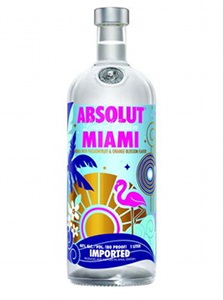
Absolut Miami, a passion fruit and orange blossom flavored vodka, was launched in time for the holidays
Winter holidays motivate 58 percent of Americans to cook gourmet or elaborate meals requiring three or more hours to prepare. Americans are most likely to buy alcoholic beverages for New Year’s Eve (37 percent) and Christmas (28 percent), according to survey responses.
In the last year, 61 percent of survey takers bought chocolate in seasonal packaging. Blacks and Hispanics, the two largest emerging markets, have the highest average spending on seasonal candy of any race or ethnicity. This may explain why “Christmas chocolate” sales are forecast to peak in 2011, surpassing $400 million in sales, an increase of 42 percent, according to Mintel researchers.
Chocolate sellers offer special products for the season. For example, Swedish gourmet chocolate maker Emanuel Andren announced a line of 2011 holiday gift guide specials including the Passion and Glamour chocolate collection. The collection retails at $69 (regular price $98) for a four four piece box and $230 (regular price $328) for the 16 piece box between November 1 to December 31, 2011. Made in Sweden, these chocolates are all individually handmade by Emanuel Andren himself, according to a press release.
“We have seen the demand grow for chocolates more than ever before. Right now instead of buying big luxury items people are able to spend a reasonable amount on chocolate and have a beautiful gift. We say that our chocolates are an affordable luxury,” said Chris Edwards, chief marketing and development officer, Edward Marc Chocolatier, a Pennsylvania based chocolate seller with brick and mortar and online shops.
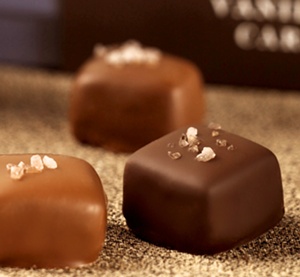
Edward Marc Chocolatier Vanilla Salt Caramel
Edward Marc seasonal items such as Holiday Pops, Chocolate Santas and Pretzel Bites (broken pretzels pieces covered in milk, dark, white and peanut butter) are very popular in the company’s retails stores while the most popular gift item is the Tower of Sweets which includes Vanilla Salt Caramel or Pecan Caramel Terrapins, also the most popular year round. Most sales are in the retail stores, three in Pennsylvania and one in Virginia.
Posted by Elena del Valle on December 12, 2011

Photos: YouTube, Hulu, Vevo
In October, 184 million people in the United States spent an average of 21.1 hours per person watching 42.6 billion videos online, the highest number to date, according to comScore Video Metrix data released November 28, 2011.
The top place went to Google Sites and YouTube.com with 161 million unique viewers spending about 7.1 hours per view and 20.9 billion videos viewed. On YouTube, in general, 48 hours of video are uploaded every minute resulting in almost eight years worth of content uploaded daily by 800 million monthly visitors 18 to 54 years old.

YouTube visitors watch three billion videos a day. These estimates are so large because YouTube is available is available in 25 countries and 43 languages and 70 percent of the site’s traffic originates outside the United States.
On a broad scale, YouTube is monetizing 3 billion video views per week globally. According to the company website, 98 of AdAge’s Top 100 advertisers have run campaigns on YouTube and the Google Display Network and the number of advertisers purchasing display ads increased 10 fold in the last year.
Next on the comScore list was Facebook.com with 59.8 million viewers, Vevo with 57 million, Microsoft Sites with 49.1 million and Viacom Digital with 48.2 million.

With videos came video ads. Some 7.5 billion video ads were displayed in October. Hulu generated the highest number of video ad impressions, 1.3 billion. Tremor Video, with more than 1 billion, was second for the first time. Next in descending order were BrightRoll Video Network (756 million), Specific Media (512 million) and CBS Interactive (415 million).
ComScore staff estimate video ads reached 53 percent of the U.S. population an average of 47 times during the month and that viewers spent 3.2 billion minutes watching video ads in October. Tremor Video ads reached the top spot with 614 million minutes. Hulu delivered the highest frequency of video ads to its viewers with an average of 46.5.
Posted by Elena del Valle on December 7, 2011

Cats were the second most popular pet
Photos: HispanicMPR
Although the percent of households with children (45 percent in 2010) across the country is leveling off and this trend is unlikely to change given the economic situation, homes with children are more likely to have a pet than childless households, according to America’s Pet Owners U.S. September 2011, a Mintel report.
At the same time, some people are acquiring pets in lieu of having children perhaps due to the high cost of child rearing. More than half (54 percent) of respondents to a 2011 online survey of 1,250 pet owners aged 21-30 by Flexcin International said they preferred to have dogs instead of children.
Who owns pets and what kind of pets do they own? Young adults, 18 to 24 years of age, are the most likely to own pets, according to the Mintel survey responses. They may be in search of companionship if they are living alone and these pet owners, researchers believe, are less likely than older pet owners to be aware of the long-term consequences of having a pet. The most common pets were cats, dogs, fish, birds, guinea pig, hamster, ferret, rabbit, snakes and rodents in that order.
Black respondents to the Mintel survey were less likely to own dogs or cats than Hispanics and whites; as residents of densely populated urban areas blacks had less space for pets, according to the Mintel analysis. Many of the Hispanic respondents indicated they lived in a home with a large number of members where space was also limited; this group had a higher ownership of fish and birds than non Hispanics.

Tasha, a chow chow, and her puppies
Mintel researchers believe that since many whites live in suburban or rural areas with ample space to accommodate dogs and cats this group owns cats and dogs in greater numbers than other ethnic and racial groups.
Hispanic respondents to the survey seemed to be most interested in pet friendly accommodations. Black respondents to the survey appeared to be the most likely to hire dog nail trimming, grooming/washing, and teeth cleaning services. At the same time, Hispanic dog owners who participated in the study said they enjoy the fun side of dog ownership, although they appeared less likely to pay close attention to their dog’s health or be willing to make personal sacrifices for their dog.
“Our hispanic (Hispanic) market is very low, only 2%, this is due to the reason that we don’t have this kind of business in our countries, our business is personalized in home pet sitting, so this requierd (required) to owners to give us a key of their house, alarm codes etc. to enter inside the house, hispanic (Hispanic) costumers call us ‘are you crazy? i’m not giving you the key of my house!'” said Oswaldo Cuadros, owner, Pet Sitting at Weston. ” Again hispanic (Hispanic) costumers needs to learn the benefit of professional pet sitters.”
More whites, often living in larger homes, said they have large and extra-large dogs than other groups. Hispanic survey respondents said they favor toy and small dogs. According to a 2009 Mintel survey, 11 percent of Latinos (compared to 6 percent of non Hispanic households with dogs) who own dogs have Chihuahuas (Mintel’s America’s Pet Owners U.S. November 2009).
Posted by Elena del Valle on December 5, 2011

A cup of Starbucks coffee
Photo: Starbucks
Many coffee drinkers prefer to buy coffee from Starbucks, according to a November 15, 2011 poll among 1,170 voters. Hispanic respondents to the survey by Poll Position, were almost evenly divided between Starbucks (34.6 percent) and McDonald’s (34.7 percent); while 29.7 percent of whites and 27.6 of blacks preferred Starbucks. Among women 34.2 percent preferred Starbucks compared to 25.7 percent of men.
The question respondents answered was: “Among Caribou Coffee, Dunkin’ Donuts, McDonald’s, Seattle’s Best Coffee, Starbucks or some other place that sells coffee, which is your favorite retail outlet for coffee?”
Starbucks was most popular among those aged 30 to 44 (37.9 percent) and 18 to 29 (35 percent) while respondents 65 and older (26.7 percent) preferred McDonald’s. There was little difference between political party affiliations: 30.9 percent of Independents, 30.8 percent of Democrats and 28.6 percent of Republicans demonstrating a preference for Starbucks.
Posted by Elena del Valle on November 30, 2011

Bone Appetite Seat, a highchair for dogs
Photo: Talin Tropic Co., Cathy Ahles
Every day since 2005 Oswaldo Cuadros, owner, Pet Sitting at Weston or one of his staff walk, play, feed, drive or just hang out with somebody else’s pets. They look after 690 animal clients, 460 dogs, 165 cats, 39 birds and 26 other types of lovable creatures. The affluent human, 98 percent white and 2 percent Hispanic between 40 and 50 years of age, clients pay his company between $7,000 and $1,000 a year, depending on their needs, to provide pet care.
These expenditures are not surprising when we take into account that 76 percent of dog/cat owners consider their pet to be part of the family, according to America’s Pet Owners US September 2011, a Mintel report. At the same time pet ownership is growing. In the past 20 years the number of American families owning a pet has increased 10 percent.
In 1998 56 percent of households owned a pet. By 2008, 72.9 million homes or 62 percent of households in America owned a pet (APPA 2011-12 National Pet Owners Survey). And, consumers are spending money on their pets.

Fancypants, a Jack Russell Terrier who was “copilot” for 13 years
This holiday season, more than half of Americans plan to spend $46 on average to buy gifts for their pets such as toys (68 percent), food (45 percent), new bedding (8 percent), clothing (6 percent), a leash, collar or harness (3 percent) or new grooming products (3 percent), according to a new AP-Petside.com poll.
The pet industry is expected to generate $50.8 billion U.S. 2011 spending, according to American Pet Products Association (APPA) figures. This year’s revenues should represent a record for the industry which has been growing steadily between 2002 and 2011. The increase in sales of pet products and services that has overcome one of the country’s worst recessions demonstrates customers strong bonds with their pets which in some cases appear to serve as surrogate family members. Mintel researchers estimate a 33 percent growth for this market segment to a high of $67.7 billion in 2016.
An example is the Bone Appetite Seat, a customized seat that allows pets 30 pounds or less to join their owners at the dinner table within their own space. The poplar product was developed by Talin Lyman, president, Talin Tropic Co. of Boca Raton, Florida.
“There is really no target age market, I get people of all ages who have pets who love the chair! I believe it is for a more high end audience, as it is a piece of art and is a higher price range. All hand made by me. I offer custom pillows and cushions out of my fabric line for the chairs. People can buy the chairs and or all of my products directly from me, My websites, and also there are a few stores who carry my products as well,” said Lyman by email in response to a question about the seat and her other pet products.
The highchairs, hand painted to the customers specifications and sometimes with their dog’s portrait, retail for $950 to $1,500. The back of the seat opens allowing the dog to climb up little steps through the rear of the chair. Custom chairs are available for larger dogs, according to the Bone Appetite Seat website. It takes two weeks for a chair to be completed plus shipping time for out of town orders.
Posted by Elena del Valle on November 16, 2011

Le Wang, assistant professor, economics, University of New Hampshire
Photo: University of New Hampshire
Marketers targeting Hispanic immigrant men take note. A change in immigration policies after September 11 at federal and state levels and heightened immigration enforcement efforts may have changed the living conditions of Hispanic immigrants and increased their incentives to marry natives. A recent study indicates Hispanic immigrants, men specifically, have become more likely to marry natives post 9/11 than before that date.
According to the study, marriages between Hispanic immigrants and natives increased by more than 2 percent in the decade following the attacks of September 11. In the first two years after 9/11 there was a small increase in marriages to natives while in the years after that the increase became yet more noticeable.
These marriages helped offset the deterioration in job prospects for Hispanic immigrants that resulted from discrimination following the attacks, according to new research from the University of New Hampshire.
“Being married to a native increases employment rates by 1.2 percent and earnings by 21.8 percent,” according to researchers at the University of New Hampshire and the University of Massachusetts at Dartmouth. “The offsetting effect may not be particularly large, given the estimated effect of Sept. 11 on intermarriage being about 2 percent. Nevertheless, this result highlights the possible importance of the labor market incentives that are associated with the increased rates of intermarriage among Hispanics.”
The researchers believe their results reflect the actions of undocumented immigrants, Hispanic immigrants marrying Hispanic natives, immigrants who were married before arrival, or new immigrants; and call for further research to better understand the intermarriage behaviors of Hispanics.
An article about the research titled The effects of 9/11 on intermarriage between natives and immigrants to the U.S. was published September 2011 in the Review of Economics of the Household and was the work of Le Wang, assistant professor, economics, University of New Hampshire, and Chunbei Wang, assistant professor, economics, University of Massachusetts at Dartmouth. The researchers analyzed the March Current Population Survey 1995-2010 and relied on a difference-in-differences approach to estimate the impact of 9/11 on intermarriage among Hispanic immigrants.
Posted by Elena del Valle on November 14, 2011
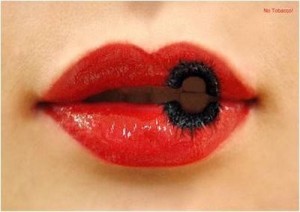
World No Tobacco campaign ad
Photos: vi.sualize.us, Campaign for Tobacco-Free Kids
Some 400,000 people die each year from their own cigarette smoking and another 50,000 adult nonsmokers die each year from exposure to secondhand smoke; there are six million children under 18 alive today who may eventually die from smoking; and 8.6 million people in the United States currently suffer from smoking-caused illness, according to the Campaign for Tobacco-Free Kids, a Washington, D.C. based nonprofit advocacy organization that strives to save lives by advocating for public policies that prevent kids from smoking.”
Many young Americans, whites and Hispanics may be opposed to smoking. More than half of respondents to a national telephone survey of 1,110 registered voters conducted October 23, 2011 disapproved of people who smoke; 52 percent of respondents asked whether they frown on people who smoke said yes, 31 percent said they did not and 17 percent had no opinion. Young survey participants, in the 18-29 year old age group, were the most likely, at 63 percent, to say they frown on smokers.
Although 54 percent of white respondents and 48 percent of Hispanic respondents said they disliked smokers, 51 percent of African-Americans said they do not frown on people who smoke. Among women respondents 53.2 percent said they frowned on smokers compared to 50.5 percent of men who said they frowned on smokers.
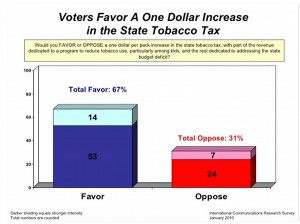
Two-thirds of voters polled supported increasing the state tobacco tax – click to enlarge
Curiously political orientation had little influence on opinions about smokers among respondents of that survey. The difference between Republicans, 54 percent, and Democrats, 53 percent, not happy with smokers was only 1 percent while fewer Independents, 48 percent, said they frowned on smokers. The survey was conducted and paid for by Poll Position, a non-partisan news, polling, and social media company.
A January 2010 national telephone survey of 847 registered voters conducted through an International Communications Research Excel study indicated that two-thirds of voters polled supported increasing the state tobacco tax by $1.00 per pack.
An older national survey, from 2006, of 1,000 likely general election voters with an oversampling of black and Hispanics voters found Hispanics to be the most supportive of smoke-free laws. In the Mellman Group survey 69 percent of respondents said they favored smoke-free laws; 69 percent of whites, 65 percent of blacks and 78 percent of Hispanics favored such laws. More women, 74 percent, than men, 64 percent, more Democrats, 73 percent, than Republicans, 67 percent, favored the smoke-free laws.




























